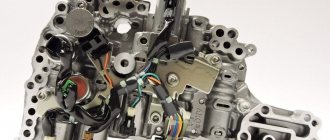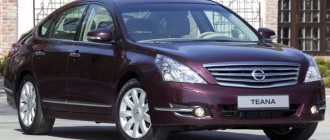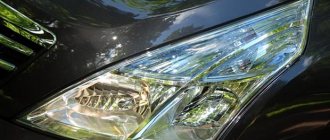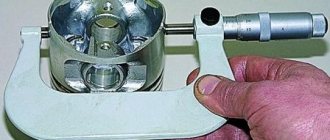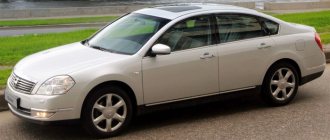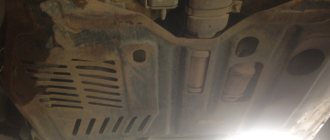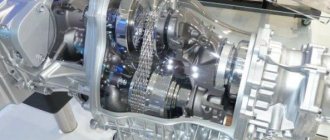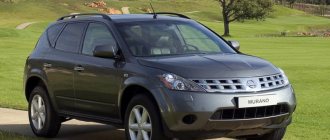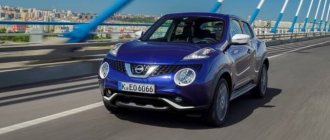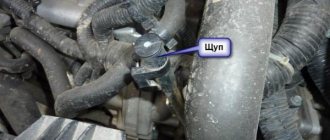For Japan
2nd generation, 06.2008 – 05.2012, Sedan
| Equipment | Release period | Price | Engine make | Body brand |
| 2.5 l, 167 hp, Gasoline, CVT, All-wheel drive (4WD) | ||||
| 2.5 250XL FOUR 4WD | 12.2008 – 07.2009 | 3,045,000 yen | QR25DE | CBA-TNJ32 |
| 2.5 250XE FOUR 4WD | 12.2008 – 07.2009 | 2799000 yen | QR25DE | CBA-TNJ32 |
| 2.5 Axis 4WD | 12.2008 – 07.2009 | 3,355,000 yen | QR25DE | CBA-TNJ32 |
| 2.5 250XL FOUR 4WD | 06.2008 – 11.2008 | 2961000 yen | QR25DE | CBA-TNJ32 |
| 2.5 250XE FOUR 4WD | 06.2008 – 11.2008 | 2678000 yen | QR25DE | CBA-TNJ32 |
| 2.5 Axis 4WD | 06.2008 – 11.2008 | 3318000 yen | QR25DE | CBA-TNJ32 |
| 2.5 l, 185 hp, Gasoline, CVT, Front (FF) | ||||
| 2.5 250XV | 12.2008 – 07.2009 | 3371000 yen | VQ25DE | CBA-J32 |
| 2.5 250XL | 12.2008 – 07.2009 | 2799000 yen | VQ25DE | CBA-J32 |
| 2.5 250XE | 12.2008 – 07.2009 | 2552000 yen | VQ25DE | CBA-J32 |
| 2.5 Axis | 12.2008 – 07.2009 | 3108000 yen | VQ25DE | CBA-J32 |
| 2.5 250XV | 06.2008 – 11.2008 | 3266000 yen | VQ25DE | CBA-J32 |
| 2.5 250XL | 06.2008 – 11.2008 | 2751000 yen | VQ25DE | CBA-J32 |
| 2.5 250XE | 06.2008 – 11.2008 | 2468000 yen | VQ25DE | CBA-J32 |
| 2.5 Axis | 06.2008 – 11.2008 | 3108000 yen | VQ25DE | CBA-J32 |
| 3.5 l, 252 hp, Gasoline, CVT, Front (FF) | ||||
| 3.5 Axis | 12.2008 – 07.2009 | 4699000 yen | VQ35DE | CBA-PJ32 |
| 3.5 350XV | 12.2008 – 07.2009 | 4053000 yen | VQ35DE | CBA-PJ32 |
| 3.5 Axis | 06.2008 – 11.2008 | 4641000 yen | VQ35DE | CBA-PJ32 |
| 3.5 350XV | 06.2008 – 11.2008 | 3,948,000 yen | VQ35DE | CBA-PJ32 |
restyling, 1st generation, 12.2005 – 05.2008, Sedan
| Equipment | Release period | Price | Engine make | Body brand |
| 2.3 l, 173 hp, Gasoline, automatic transmission, Front (FF) | ||||
| 2.3 230JK | 12.2005 – 05.2008 | 2415000 yen | VQ23DE | CBA-J31 |
| 2.3 230JK M-collection | 12.2005 – 05.2008 | 2604000 yen | VQ23DE | CBA-J31 |
| 2.3 230JM | 12.2005 – 05.2008 | 2762000 yen | VQ23DE | CBA-J31 |
| 2.3 Axis | 12.2005 – 05.2008 | 3,019,000 yen | VQ23DE | CBA-J31 |
| 2.3 230JK P-collection II | 12.2006 – 05.2008 | 2468000 yen | VQ23DE | CBA-J31 |
| 2.3 230JK M-collection cool modern | 07.2007 – 05.2008 | 2762000 yen | VQ23DE | CBA-J31 |
| 2.3 230JK NAVI collection | 11.2007 – 05.2008 | 2688000 yen | VQ23DE | CBA-J31 |
| 2.5 l, 160 hp, Gasoline, automatic transmission, all-wheel drive (4WD) | ||||
| 2.5 250JK FOUR 4WD | 12.2005 – 05.2008 | 2625000 yen | QR25DE | CBA-TNJ31 |
| 2.5 250JM FOUR 4WD | 12.2005 – 05.2008 | 2972000 yen | QR25DE | CBA-TNJ31 |
| 2.5 250JK FOUR P-collection II 4WD | 12.2006 – 05.2008 | 2678000 yen | QR25DE | CBA-TNJ31 |
| 2.5 250JK FOUR NAVI collection 4WD | 11.2007 – 05.2008 | 2898000 yen | QR25DE | CBA-TNJ31 |
| 3.5 l, 231 hp, Gasoline, CVT, Front (FF) | ||||
| 3.5 350JM | 12.2005 – 05.2008 | 3528000 yen | VQ35DE | CBA-PJ31 |
| 3.5 Axis | 12.2005 – 05.2008 | 4111000 yen | VQ35DE | CBA-PJ31 |
| 3.5 350JM cool modern | 07.2007 – 05.2008 | 3570000 yen | VQ35DE | CBA-PJ31 |
Right headlight for Nissan Teana J32 2008-2011 Price 11,000 rub.
Nissan engine, QR25DE | Installation | Warranty up to 100 days Price 80,000 rub.
Engine assembly VQ23 for Nissan Price 46,000 rub.
Front bumper Nissan Teana J31 2003-2008 Price 15,000 rub.
Engine for Nissan QR25DE | Installation | Warranty up to 100 days Price 80,000 rub.
Engine Nissan VQ35DE | Installation | Warranty up to 100 days
Appearance Nissan Teana 2008 - 2011
Nissan Teana first generation from above, second from below
The design of Teana 2009 has become more refined and sophisticated compared to the first generation, but the general appearance features have been preserved. The false radiator grille, consisting of horizontal lines, is completely chrome-plated on the Nissan Teana j31 and j32, but the width of the stripes and their number are different. But the front optics are more different; in the second generation, the headlights stretched along the straight line of the hood, while in the first body they are not so stretched. In the photo you can compare the flagship Nissan sedans in both body styles.
There is too much chrome near the license plate, what do you think?
The second generation Teana has retained the chrome moldings from its predecessor, but this is good, they look solidly harmonious. But shiny door handles seem superfluous.
The rim design, as befits a business sedan of that time, is classic and elegant.
The rear of the Teana in the j32 body is also similar to the first generation, there are chrome inserts near the number plate, and there is one fog lamp (or reflector) in the middle of the bumper. But the rear optics have been changed to match the front ones, the lights are stretched along the rear fender.
Nissan Teana engines
The urban mid-size sedan from the Japanese automaker appeared to the world in 2003, replacing two models - Cefiro and Laurel. Nissan Teana immediately hit home with buyers, including Russian ones. To this day, sales on the secondary market remain at a good level. Over its history, the model had three births and two modernizations in the first and second generations. Already in the second incarnation, the car was transferred to business class and has, rather, an intermediate position between D and E-class. From the predecessor of the premium Nissan Maxima, a line of J codes was received, which ended in 30.
The idea of combining strict luxury, maximum comfort, power, quality, exceptional safety, attention to detail down to the smallest details and the dynamism of sports cars has been delightfully realized. In addition, impeccable sound insulation, soft ride, excellent handling, expensive finishing and a wide range of functionality are the distinctive characteristics of the Nissan Teana.
What CVTs are on the Nissan Teana?
Nissan Teana cars, which are intended for the Russian automobile market, are equipped with two different CVTs - “ninth” and “eleventh”. The first one was marked RE0F09A and is found on the version of the model with a 3.5-liter engine. The second is a real bestseller among continuously variable transmission types. The production and assembly of components is carried out by the famous Japanese variator according to the Jatco classification, called JF011E. Cars with a 2.5-liter engine are most widespread in Russia, therefore, the JF011E CVT is more common and is considered the main one. It does not have any design features. In essence, we are dealing with ordinary V-belt variators, which have already been well studied by both professional and garage auto mechanics. Inside the JF011E there are two pulleys connected by a V-belt. Due to this mechanism, torque is transmitted from the drive to the driven shaft. The cones are removed or brought closer together thanks to a special device - a step motor. This is how the gear ratios change, of which there are virtually countless numbers in a continuously variable transmission.
The design differences between JF011E and RE0F09A are minimal: the “eleventh” received a pump, which is in many ways similar to the device from an automatic transmission. The units also support different engine torques. Thus, the 2.5-liter QR25DE engine at its peak develops a torque of 233 Nm, and the larger analogue VQ35DE as much as 326 Nm. CVTs from Jatco are considered the most reliable, popular and hence in demand. Not only Japanese-made cars are equipped with units from this company. The JF011E continuously variable transmission is also found on cars from Dodge, Citroen, Peugeot and Renault. In total, over a million cars with this transmission modification have been sold. Service centers have accumulated vast experience in restoring and repairing the “eleventh” variator. Its prevalence has a positive effect on the number of parts, spare parts and repair costs. The unit can be repaired in any medium or large city. In small towns there are certain difficulties in finding qualified craftsmen, but this problem has recently become less and less noticeable.
Overheating variator Nissan Teana J32 signs
Filimon @ 22.8.2017, 23:15
It is certainly very strange that a car of this class has such a problem. Who is fighting this and how? I drove 130 along the highway for about half an hour. I was about to overtake a car in the traffic. I press the throttle and the car doesn't move; the revs don't rise above 3000. An extraneous sound appeared. In general, I drove to the first parking lot I came across and stopped. He stood there, got upset (thought to Khan Variku), and moved on. It seems to have let go. The path was not close to 3500t.km. On the way, such problems happened 5 more times. It got to the point that the car didn’t even go 90 km/h. Sadness. Before this trip I traveled to the south and did not experience this problem, although I was also driving fast, unless of course 130 is fast))). The radiator is clean and washed. As I understand it, the box went into emergency mode. The car was very disappointing(((
Filimon @ 23.8.2017, 1:15
It is certainly very strange that a car of this class has such a problem. Who is fighting this and how? I drove 130 along the highway for about half an hour. I was about to overtake a car in the traffic. I press the throttle and the car doesn't move; the revs don't rise above 3000. An extraneous sound appeared. In general, I drove to the first parking lot I came across and stopped. He stood there, got upset (thought to Khan Variku), and moved on. It seems to have let go. The path was not close to 3500t.km. On the way, such problems happened 5 more times. It got to the point that the car didn’t even go 90 km/h. Sadness. Before this trip I traveled to the south and did not experience this problem, although I was also driving fast, unless of course 130 is fast))). The radiator is clean and washed. As I understand it, the box went into emergency mode. The car was very disappointing(((
Filimon @ 23.8.2017, 2:15
It is certainly very strange that a car of this class has such a problem. Who is fighting this and how? I drove 130 along the highway for about half an hour. I was about to overtake a car in the traffic. I press the throttle and the car doesn't move; the revs don't rise above 3000. An extraneous sound appeared. In general, I drove to the first parking lot I came across and stopped. He stood there, got upset (thought to Khan Variku), and moved on. It seems to have let go. The path was not close to 3500t.km. On the way, such problems happened 5 more times. It got to the point that the car didn’t even go 90 km/h. Sadness. Before this trip I traveled to the south and did not experience this problem, although I was also driving fast, unless of course 130 is fast))). The radiator is clean and washed. As I understand it, the box went into emergency mode. The car was very disappointing(((
Filimon @ 27.8.2017, 12:47
How much did this design cost?
And they call this the Variator cooling radiator)))) The photo was provided by GRAND7788 - he sawed up his broken radiator for fun, so what’s there to cool it with?
How reliable is the RE0F09A variator?
The RE0F09A variator is designed for more severe loads, and therefore has a greater safety margin compared to other modifications of the gearbox. But, as the practice of operating cars with this unit shows, it is not always possible to fully exhaust the entire resource declared by the transmission manufacturer. In large cities, RE0F09A “lives” on average 150-180 thousand kilometers; it is not always possible to generate more. The most commonly affected parts are cones, V-belts, bearings and valve body. It has a more expensive and complex pump than the “eleventh”. The cost of the new mechanism is about 25,000 rubles
When the first signs of trouble appear, it is important to seek professional help as soon as possible.
Typically, RE0F09A problems begin with slight twitching of the car while driving, which in principle should not happen. The “brains” of the variator are tuned for imperceptible, smooth gear shifting without obvious “jumping” of the tachometer needle
If you observe even minor jerks, it is important to immediately undergo computer diagnostics at the nearest service center. Often, unpleasant symptoms of failure are caused by worn cone bearings - a financially costly problem, but solvable
Bearings may “hum” after the first 50,000 kilometers. If the cones are worn out, serious repairs will be required. Often, a major overhaul of the RE0F09A does not make sense, since it costs the car owner the cost of a contract CVT in good condition and with low mileage. The high costs of restoring the “nine” are due to the shortage of spare parts and components for this modification of the gearbox on the Russian market.
Is it worth buying a Nissan Teana 3.5 with a RE0F09A CVT? A question that everyone must answer, taking into account personal preferences and views on what the ideal car should be. By and large, there is nothing wrong with this unit, it has no serious “jambs” and, with proper care, can last for ten years. Another thing is that not everyone realizes that the CVT is a city gearbox that requires increased attention.
It is important to follow the maintenance schedule and correct minor breakdowns in a timely manner; you should not bring the car to a state where it stops in the middle of the road and does not go forward or backward (a clear sign of a broken V-belt). The belt does not break immediately, but gradually, giving the driver signs of its imminent failure: car jolts, extraneous noise in the variator
A comprehensive diagnosis of the sedan’s transmission will tell you what condition the belt is in.
Why does the variator not work correctly?
CVT gearbox disassembled.
There may be several reasons for this. Let's consider each of them separately.
- Truly a production. If this is the case, then you are very unlucky; in principle, we can assume that you need to change the variator box. Naturally, if production takes place. But in reality, everything may not be so bad - it is possible to understand whether there is production only with the help of diagnostics and special equipment, and in most cases it is also necessary to dismantle and disassemble the unit.
- The need for calibration. Transmission calibration is a procedure that allows you to get rid of vibrations and shocks from your car. It clears the memory of the on-board computer, that is, certain parameters and some settings are reset. However, unfortunately, we cannot say for sure whether calibration can be performed on your vehicle. The thing is that the procedure itself is carried out in several stages. The first is the process of resetting the memory of the transmission ECU, and the second is the so-called unit training. In the second step, the control unit writes sensor readings into memory (this occurs at the required temperature, that is, at operating temperature). However, older Nissan cars (before 2000) are equipped with an engine torque converter and gearbox, the purpose of which is to soften the movement. Accordingly, it is not possible to calibrate properly in this case. Therefore, you will have to clarify this issue with local specialists.
- Another reason why CVT gearboxes often do not work properly is failure or wear of the clutches. In practice, this problem is quite common, and often incorrect behavior of the CVT is solved by replacing the friction discs.
- Insufficient oil level or poor quality fluid. Poor quality or insufficient level of transmission oil can also cause certain problems in the operation of the unit. We recommend that you check the level and add oil if necessary, and if there is a leak, repair the problem.
In any case, the most accurate method to determine the malfunction and solve it is computer diagnostics of the unit’s operation. This is the only way you can make a correct diagnosis.
Transmission
There are also models with all-wheel drive on the market, which were equipped with a 4-cylinder QR25DE engine and a CVT. The proprietary “All Mode 4×4” all-wheel drive system under normal conditions transfers most of the traction to the front wheels. The rear wheels are connected by command from the electronics. For special cases, a forced locking mode of the inter-axle clutch is provided, when the thrust is distributed among the axles in a ratio of 50:50.
There are no serious problems with the transmission yet. Unless there are rare cases of system malfunctions due to damage to the protective corrugation of the electrical harness, and subsequent ingress of moisture.
Alternative choice
You can replace the 2nd generation Nissan Teana with:
- Mazda 6;
- Toyota Camry;
- Honda Accord;
- Opel Insignia.
Mazda 6 will cost a little less than the Japanese sedan. But in terms of the quality of the engines, chassis and interior, this model is practically not inferior to the Teana. The used Mazda 6 2008 is distinguished by powerful brake mechanisms, which, as car owners note, even after many years of use, effectively perform their tasks. The Japanese model is characterized by excellent handling and road stability.
Toyota Camry costs about 100 thousand rubles more. However, if we look at the reviews of car owners, this sedan is inferior to the Nissan Teana in many important respects. Thus, the 2008 Camry has insufficient cabin sound insulation, the engine requires replacement a little earlier and problems arise in the suspension. But in terms of the quality of finishing materials, this sedan still looks better.
The most successful replacement for Teana could be the Honda Accord. Many car owners put these models on the same level. This judgment is also supported by the fact that Japanese sedans on the Russian secondary market are offered at the same price. The Accord may be a little more expensive to maintain. But otherwise this car does not cause any complaints.
And if you need a truly dynamic business-class sedan, then among the presented models it is worth considering the option of purchasing an Opel Insignia. The German car is equipped with many driver assistants to make driving easier and has good handling. The Insignia's only downside compared to the Teana is that it lacks rear legroom.
Repair costs
Nissan Teana cannot be called a cheap car to maintain. Perhaps the most expensive part that requires regular replacement is the CVT. You will also need to update frequently:
- stabilizer struts and bushings - every 20-30 thousand kilometers;
- tie rod ends - 40 thousand kilometers;
- ball joints, silent blocks, rear suspension arms - 80 thousand kilometers;
- shock absorbers, wheel bearings and supports - 150 thousand kilometers.
It will be relatively expensive to repair the exhaust manifold, which cracks due to constant overheating. Upon reaching 70 thousand kilometers, the steering rack will need to be replaced.
Options and prices (summary table)
| # | Equipment | Model years | Drive unit | Transmission | Engine, cc. cm | Acceleration from 0 to 100, s | Max. speed, km/h | Power, max., hp (kW) at rpm | Fuel consumption in the combined cycle, l/100 km |
| 1 | 2.5 CVT Elegance + Four | 2010 — 2011 | Full (4WD) | Variable speed drive | 2488 | 9.8 | 180 | 167 (123) / 5600 | 9,4 |
| 2 | 2.5 CVT Luxury + Four | 2010 — 2011 | Full (4WD) | Variable speed drive | 2488 | 9.8 | 180 | 167 (123) / 5600 | 9,4 |
| 3 | 2.5 CVT Luxury Four | 2010 — 2011 | Full (4WD) | Variable speed drive | 2488 | 9.8 | 180 | 167 (123) / 5600 | 9,4 |
| 4 | 2.5 CVT Premium Four | 2010 — 2011 | Full (4WD) | Variable speed drive | 2488 | 9.8 | 180 | 167 (123) / 5600 | 9,4 |
| 5 | 2.5 CVT Elegance | 2008 — 2011 | Front | Variable speed drive | 2495 | 9.6 | 200 | 182 (134) / 6000 | 9,5 |
| 6 | 2.5 CVT Elegance+ | 2008 — 2011 | Front | Variable speed drive | 2495 | 9.6 | 200 | 182 (134) / 6000 | 9,5 |
| 7 | 2.5 CVT Luxury | 2008 — 2011 | Front | Variable speed drive | 2495 | 9.6 | 200 | 182 (134) / 6000 | 9,5 |
| 8 | 2.5 CVT Luxury+ | 2008 — 2011 | Front | Variable speed drive | 2495 | 9.6 | 200 | 182 (134) / 6000 | 9,5 |
| 9 | 2.5 CVT Premium | 2008 — 2011 | Front | Variable speed drive | 2495 | 9.6 | 200 | 182 (134) / 6000 | 9,5 |
| 10 | 3.5 CVT Luxury | 2008 — 2011 | Front | Variable speed drive | 3498 | 7.2 | 210 | 249 (183) / 6000 | 10,2 |
| 11 | 3.5 CVT Luxury+ | 2008 — 2011 | Front | Variable speed drive | 3498 | 7.2 | 210 | 249 (183) / 6000 | 10,2 |
| 12 | 3.5 CVT Premium | 2008 — 2011 | Front | Variable speed drive | 3498 | 7.2 | 210 | 249 (183) / 6000 | 10,2 |
Engines
The Russian-assembled Teana-2 model is equipped with three types of engines – 2.5 and 3.5 liter V6 petrol power units, as well as a 2.5 liter petrol “four”.
The MR20DE 2.0 liter four-cylinder engine is also available for the Chinese market, but cars with such an internal combustion engine were not supplied to Russia.
The most common Nissan Teana engine is a 6-cylinder V-shaped 2.5 power unit with a capacity of 182 hp. With. models VQ25DE. This internal combustion engine is only available on vehicles with front-wheel drive.
Another fairly popular engine with the same volume is the 4-cylinder QR25DE, its power is 167 horsepower, and it was installed on Russian and Japanese 4x4 Teana Four cars.
And the most powerful power unit is the six-cylinder VQ35DE 248 hp engine. With. 3.5 l, it is available in the 4x2 version.
Recommendations for using the variator
Car owners should avoid aggressive driving; in this case, the transmission quickly overheats, which leads to critical breakdowns. The oil here should be changed on a regular basis, constantly checking its level.
Repair of the Nissan Teana variator should be performed exclusively by professionals using original spare parts.
Factories where Nissan Tiana is assembled
There are quite a lot of enterprises where the model is assembled. They are located in different countries:
- Great Britain;
- Japan;
- Thailand;
- Russia.
For a long time, the car was assembled at Japanese factories. From where Tiana was supplied to the domestic market until 2009. After some time, production was launched at a plant near St. Petersburg. Modern equipment is installed here and strict quality control of products is carried out.
Russian assembly of Nissan Tiana: characteristic features
Production of the model at the Russian plant started in 2008. The car is built on the Nissan D platform. Three years later it underwent an update. The restyled version was practically no different from its predecessor. The main changes affected the technical part.
Russian-assembled cars are equipped with gasoline power units of 2.5 and 3.5 liters, power 167, 182 and 249 liters. There are two types of engines - inline four and V-shaped six. The latter have proven in practice that they are more reliable and can last more than 500 thousand km without major repairs.
The engines operate in conjunction with an automatic transmission or continuously variable transmission. The installations do not last long. On average, they take care of 160 – 200 thousand km. After which they need to be repaired, but this doesn’t save them for long. Experts recommend changing the box. The car's suspension is simple and independent. There is a MacPherson strut at the front and a multi-link at the rear.
It's comfortable and pleasant to be inside the car. The sound quality of the acoustics and noise insulation are decent. But the finishing materials leave much to be desired. The upholstery on the driver's seat quickly tears, the steering wheel braid wears off.
Vin number of Russian assembly
The car has several places where informative signs are located. The identification plate or VIN code is located under the front seat. The engine number is on the cylinder block at the top right. Tire pressure information is located on the center pillar between the rear and driver's doors.
The VIN number will help determine where the car is assembled. The first three characters indicate the country of origin:
- JN – Japan;
- SJN - Great Britain;
- Z8Ni – Russia.
Russian assembly - Z8NBBUJ32AS006139.
Russian and Japanese assembly of Nissan Teana: are there any differences?
Nissan Tiana, regardless of which factory it is assembled at, has no significant differences. The quality of the paintwork, technical and driving characteristics are at a high level. The salon is spacious and well decorated. An important advantage of the model is the low cost of maintenance.
Conclusion.
Nissan Teana is a comfortable and reliable car. It boasts good driving characteristics and a presentable appearance. Will be a worthy competitor to famous brands. For Russian drivers, domestically assembled versions are available today. Since 2009, Japanese models have not been supplied. But this is not a reason to be upset. The car produced by our specialists is not inferior to the original. In some ways it is even superior - the suspension is more comfortable, since it took into account the peculiarities of Russian roads.
1 420
Operational resource
| The designs of modern gearboxes have appeared relatively recently, so there is no need to demand from such transmissions reliability at the level of classic automatic or manual transmissions. On average, such transmissions run for about 200 thousand, after which a major overhaul of the Nissan Teana CVT . |
If you practice a dimensional style of driving a car, you can significantly increase the service life, significantly reducing your car maintenance costs.
Nissan Teana variator resource – JF011E
Servicemen speak positively about this variator, calling it a record holder for life expectancy. With the proper (somewhat meticulous) attitude, the box “lives” for 200 and even 250 thousand kilometers without a single breakdown. But in practice, such achievements are very rare. However, even if the JF011E variator is monitored from time to time, the unit is capable of operating for at least 150 thousand km without ever reminding the driver of its existence. The most common fault with JF011E is wear of the cone bearings. They can start buzzing after 50 thousand km or after 100 thousand km. As they say, depending on your luck. Replacing four bearings will cost the car owner an approximate amount of 35,000 rubles. By the way, we note that most often the bearings “hum” on Nissan cars: the CVT on Qashqai is especially susceptible to this disease. On the X-Trail, the bearings are more reliable and cause much less trouble to the car owner.
However, in the Mitsubishi Outlander, problems with bearings are extremely rare. What is this connected with? Fans of cars with a continuously variable transmission can only guess.
Experts note several reasons for the premature failure of bearings, and therefore cones:
- Wear products from the box (abrasive metal particles) fall on the surface of the working elements of the unit and provoke increased wear;
- Neglect of regulated transmission maintenance: this includes regular cleaning of magnets, replacement of filters, and change of transmission oil;
- High loads on the box, for example, long driving at a speed of 150-160 km/h.
But there is no consensus among experts about why the variator starts to “hum.” Some even argue that bearings are destroyed due to a low accuracy class and low dynamic load capacity. But don't be afraid of these small but extremely important parts of the variator. Sometimes problematic bearings should not become an obstacle to your dream - purchasing a modern city sedan. Moreover, if you prefer a calm, urban driving style, there is nothing to be afraid of. With the right attitude and a relaxed driving style, the JF011E will definitely last ten years without any problems. Of course, there are cases when the variator requires repair after 50,000 km. But here there are more questions for the car owner: in what conditions was the car operated, whether the transmission was warmed up before driving, and whether the temperature regime of the transmission was observed.
Repair of variator Nissan Teana L33 (JF017E)
This variator became a follower of the JF010E and therefore practically replicates it in terms of hardware. One of the differences is the elimination of using a step motor to move the cones. The variator valve body has become more reliable due to the use of new standardized solenoids. The torque converter, on the contrary, is less durable due to the increased locking range, which leads to wear on its clutch. All recommendations for maintenance and repair of the Nissan Teana L33 JF017E variator are absolutely similar to the previous ones, however, to change the transmission oil, only NS-3 oil should be used. The variator does not have any other problems.
Features of the body and interior
The paintwork of the Nissan Teana J32 is not designed for Russian conditions. It is easily damaged even with minor impact. The body also does not tolerate prolonged use in Russia. The parts most susceptible to corrosion include the following:
- wheel arches;
- hood;
- door edges;
- trunk lid.
Chrome exterior parts become cloudy quite quickly. When purchasing a Tean, it is recommended to inspect the condition of the trunk floor and the bottom of the car. In addition, weld seams require attention, as they lose their tightness over time. In the cold, Tean's door handles freeze quickly, and the windshield can crack.
Another pronounced drawback of the Japanese sedan is its interior. Moreover, we are not talking about the ergonomics of the internal space. This is where the 2008 Nissan Teana is one of the best sedans. The manufacturer needed to justify the relatively low price asked for a car with very reliable and fairly powerful engines. And he did this by covering the interior space and seats with low-quality materials. In particular, in almost all used Nissan Teana the driver's seat is completely worn out. This is partly due to the fact that the sheathing threads unravel early.
But in terms of interior noise insulation, the Japanese model surpasses a number of its competitors. Naturally, when buying a used Nissan Teana J32, you should immediately prepare money to reupholster the steering wheel and gearshift lever, the skin of which wears off after only 100 thousand kilometers. It is also necessary to take into account the fact that on-board electronics do not withstand many years of use. Although its repair often comes down to reflashing the control unit.
Nissan Teana L33: CVT overhaul
- Maintenance schedule Nissan Teana L33
- Nissan Teana CVT repair
Good day!
Today's report will be about the overhaul of the RE0F10D (JF016E) variator on the Nissan Teana L33.
The mileage at the time of repair was 171,000 km, the car was 5 years old.
During a scheduled oil change in the variator, a large amount of chips was discovered in the pan.
Also, when moving, jerks were periodically felt.
It was decided to remove and disassemble the unit.
The torque converter is overheated - a consequence of improper locking operation.
Later, when it was cut, it turned out that only the friction lining had burned out.
The cones show scuff marks at speed - a consequence of pressure surges at the moment the donut is blocked.
The working surface of the belt is also eaten away.
The seat for the pulley bearing in the middle part of the housing is worn out, and in this place the cone has some play.
The oil pump is in good condition, but there are scratches on the valve and working surface from chips that have fallen there.
In this case, the reason for the failure of the variator is the natural wear of the valve body.
As a result, we change the valve body, belt, bearings, grind the cones, deploy the pump under the repair valve, restore the worn-out seat for the bearing using a cast iron sleeve, send the torque converter for repair, and naturally change all the consumables. The rest of the parts are in good condition, we leave them.
When repairing or replacing this variator model, there is one significant nuance. Jatco has unified the solenoids in the latest generation CVTs, and in order to save on production, it was decided to make them with a low accuracy class, while adjusting everything electronically. As a result, each solenoid is calibrated at the factory and the manufacturer writes individual calibration data into the electronic control unit for it. Now, with a new valve body or a new unit, a disk is supplied with calibration data for each solenoid, which must be entered into the CVT electronic control unit through a dealer scanner.
If you ignore this procedure, the variator will not work correctly, depending on how much the solenoid calibrations differ from those written in the block. Accordingly, for those who purchase a used unit, without calibration it will not function correctly.
After assembling the variator, all that remains is to install it on the car, register the calibration data from the disk included in the kit, and adjust the fluid level. It is also highly advisable to install the latest version of the CVT control unit software if updates exist. In early versions of the software, for the sake of the environment and reducing fuel consumption, the pressure in the variator was lowered to the minimum permissible values, which could lead to premature wear of the transmission, and also in some driving modes (for example, uphill at low speeds) cause discomfort in the form of too low engine speed and slight twitching. This car had the very first version of the software; to date, 3 updates have already been released. We install the latest version through Consult 3 plus.
After the repair, the factory life of the unit was completely restored.
We wish everyone long and trouble-free operation of your cars!
Service
Proper operation and compliance with the manufacturer’s instructions while moving behind the gearbox is the basis for the long service life of the variator and its full service life. The resource of the Nissan Teana 2.5, 3.5 variator is hundreds of thousands of kilometers of road. But without the help of the car owner, the box simply will not be able to realize its full potential. You need to treat the sedan's box correctly from the first days of operation. Firstly, before you start driving, you should definitely warm up both the engine and the variator. Warming up is especially important in winter after long periods of inactivity. After arriving at your destination, you do not need to immediately turn off the engine. It is necessary to give the engine and gearbox some time to cool down and normalize the temperature in the system. Secondly, avoid stress. If possible, any at all. A car with a CVT is not the best vehicle for racing and off-road conquering. Only calm, moderate operation of the car in city conditions.
In the RE0F09A modification, belt distortions as a result of heavy loads occur more often than in the JF011E. Any load or slippage can cause the belt to jump off and begin to destroy the cones. The scuffs that form on the surface of the belt and cones are actually metal shavings, which will then end up in both the torque converter and the pressure reducing valve of the oil pump. Jerking and jerking of the car is one of the signs that the valve is stuck in an intermediate position. The mechanism can jam as a result of abrasive particles. If you immediately contact a service station, you can avoid serious shocks. The surface of the cones is ground (this is much better than completely replacing them), but the belt must be completely replaced in case of such a breakdown. So, in order for the resource of the Nissan Teana variator to please you and become a reason to surprise auto mechanics, follow the following simple rules:
- Changing the oil in the box: once every 50-60 thousand km for new cars and once every 35-40 thousand km for cars with high mileage;
- Flushing the coarse filter during the first two gear oil changes and replacing the element during the third ATF change;
- It is best to change the fine filter every time;
- Be sure to wash the magnets that catch metal shavings, which are installed in the variator tray;
- Clean the radiator every six months.
The temperature must be constantly monitored. Jatco CVTs do not tolerate critical temperature increases. The temperature of the unit is monitored by a special sensor, which, in the event of a malfunction, sends a signal to the electrical circuit, resulting in an activated light bulb indicator on the instrument panel. In this case, the box goes into emergency mode, in simple words, the car stops
It is important to constantly clean the radiator, flush the system by removing the bumper, and cleaning the air ducts, which are constantly clogged with midges, dust and dirt. As for gear oil, Nissan recommends using Nissan NS-2 and Nissan NS-3 products.
For a complete replacement, you will need two canisters of liquid (total volume 8 liters).
Typical breakdowns
| Typical faults of the JF010E variator are wear of the torque converter, problems with iron, belt stretching and wear of cones. When using this continuously variable transmission, the oil pump was subject to increased loads, which often led to its premature failure. |
Long-term use of old oil not only contaminated the valve body, but also damaged the solenoids.
| CVT modifications JF011E and JF017E have typical breakdowns, such as wear of the cones and the need to replace the iron part, failure due to overheating of the automation. It was necessary to eliminate increased loads and slippage, which led to premature wear of this continuously variable transmission. |
Regular oil service extended the service life of the gearbox, and repair of the Nissan Teana variator in such a case was required only at high mileage.
Which unit to choose a car with
All Teana's six-cylinder engines are successful. It matters how, where and how long the vehicle was used. Reliable, powerful and economical VQ series 25 35. Their service life is 350 thousand km. Approximately 70% of commercial vehicles are 2.5 and 20% are 3.5 liter. Gasoline 4-cylinder two-liter QR-series are very rare, but if you find one and decide to buy, approach the final decision very carefully and critically.
Most often, these are former corporate horses that were used “both in tail and mane”, and were serviced with the peculiarity of the Russian mentality - not my thing, don’t mind. Of course, you can buy and install a contract internal combustion engine. Replacing an old unit with a new one involves removing the mechanism, so do not try to do this yourself if you do not have such skills.
Flight magazine Nissan Teana 2.5 (2014)
Good afternoon everyone. There was a desire to drop a few lines about the excellent unit on my car and this, of course, is a CVT. In general, the bestial situation in the world of automotive industry is developing. CVTs and robots have captured it seemingly irrevocably. And even conservative companies are already calculating how much money they will save when they start producing it, or rather when installing it on their cars. The poor buyer is simply left with no choice. And managers are taught how to properly float this crazy thing. And they do everything smartly (they seem to learn from VAGA) when you buy it, you tell them: “Yes, your CVTs (robots) ... they’re broken.” And they answer you: “That’s how it was on the last model, from this year everything has been fixed, everything is now super. And even if you forget about it and don’t change the oil, it will endure everything and cover 500-1000 t.km.” And after 2-3 years, when this miracle fell apart for you and, as luck would have it, exactly after the end of the warranty and you come with the same question, they tell you that it turns out that this box was not ideal, but the one released this year was just that. and is. And they are even ready to trade in to pick up yours when buying a new one. True, the box on it... is a lot more fragile, so we won’t give much, but be glad that we buy it from you at all, we are LOYAL sellers and “love” our client. Well, okay, enough of the lyrics, let's get to the point.
A few days ago I met an old friend Vitalik in a Muscovite 408 (names and brands of cars are fictitious). I say, where is your x-trail? The engine is closed and under repair. And my soul became so sad, because the parallels suggested themselves. The brand is the same, the engine is the same, I think the gearbox is the same, although the managers say they have improved it, but we look at the beginning of the story and understand how much. And I became even sadder, remembering what a pedant Vitalik was and what he changed during his short mileage of 120 thousand km. oil 2 times completely with filter replacement. And even if he moved off the asphalt, it was only a couple of times. In short, the mood completely deteriorated when he announced the approximate cost of repairs.
In general, inspired by this meeting, I began to actively look for oil for my variator, and there were all sorts of gaskets. I found everything without problems, but there was a problem with the oil. It turns out they haven’t been importing it to Russia for about 2 years now, only OD has direct deliveries. Here's a reversal. But at the same time, it appears on sale here and there, sometimes Amer’s, sometimes Japanese. A reasonable question is - where? Like old stock. I think people have stocked up quite a bit. Somehow I didn’t want to play roulette. It seems like a direct road to OD. But they only do a partial replacement, without removing the pan and replacing the filter. And do they even ask the question? I no longer have a screw in the design; you can’t check anything at all. I started looking for an alternative. The profile services have now all switched to Ravinol and Totachi. The latter makes NS-3 oil specifically for my varic. Those. not some kind of substitute, but specifically the oil for it. I think I'll stop there. Moreover, the services have a lot of experience in using it. So far only positive reviews.
But all this does not solve the main problem, but, I hope, only delays it. It turns out that we drive like on a volcano even after driving 70-100 t.km. you have to constantly wait for a trick from this “high-tech” unit. Thank you auto manufacturers and low bow. I just don’t understand, these units are installed only to obviously reduce the cost of the design. But why then does it stand alone, like half a car, or even more? I personally see a clear start here from manufacturers to create a killer impulse for the buyer to buy a new car.
Salon and trunk
Externally, the interior of the Nissan Teana is similar to the interior of the Infiniti, but this is not surprising - the Nissan and Infiniti brands are produced by the same company.
Fabric upholstery on the seats is only available on the car in the simplest basic configuration, Elegance 2WD; all other versions have a leather interior.
The instrument panel, console and door trims are decorated with wooden inserts, the steering wheel is trimmed with leather, and in general high-quality expensive materials are used.
The richness of the interior is the hallmark of Nissan's flagship cars, and this is the brand's advantage over its competitors.
The engine on the Teana J32 is started by a button, the driver's seat is electric, there is a seat position memory function (2 settings).
Inside the car, everything is thought out to the smallest detail:
- a comfortable seat allows the driver not to get tired while driving for many hours;
- the control element is ergonomic, all buttons and knobs are in their place;
- The dashboard is informative, and the soft backlight allows you to read all the information from the instruments without stress.
Sitting on the rear bench, the 1.8 m tall passenger has ample headroom and front knee room in front of the front seat.
The rear armrest is not simple, it is a real multifunctional device and is equipped with:
- two cup holders;
- buttons for ventilation and seat heating;
- audio control panel;
- rear curtain control buttons.
There is more than enough space for the front passenger.
The trunk lid on the sedan opens from the passenger compartment, on the driver's side; the volume of the luggage compartment is declared by the manufacturer to be 488 liters.
Inside, the trunk is trimmed with pile material; the internal space for transporting goods does not stand out in anything special.
Options and prices
Elegance
Before leaving, Teana was presented in 6 trim levels, the youngest of which, Elegance, was equipped with a 2.5-liter engine and CVT. For the front-wheel drive version, the dealer asked 1,293,000 rubles. The basic version boasted modern 16-inch aluminum wheels. The headlights were filled with xenon, and the lights received LED “stuffing”. For convenience, fog lights are provided both front and rear. A rain and light sensor is already available as standard equipment. The side mirrors are also “packed”: turn signal, heating and drive. The door handles are chrome-plated, the trunk has an electric drive. The metallic color effect is only available as an option.
In the cabin, the basic version allows you to get:
- adjustable steering column;
- leather-wrapped steering wheel with audio controls;
- button to start the engine;
- velor seat upholstery;
- separate armrests for both the first and second rows;
- heated front seats;
- central locking with remote control;
- power windows for front and rear doors;
- climate control for 2 zones;
- radio, MP3, player, etc.;
- 6 speakers of the acoustic system.
Elegance Plus
The extended version of the Nissan Teana 2021 - Elegance Plus with the same technical “stuffing” - will cost the buyer 1,373,000 rubles. This amount includes leather upholstery, heated first row and keyless entry.
Luxury and Luxury Plus
Next up is the Luxury package for 1,423,000 rubles. Xenon headlights, heated second row, and a rear view camera appear here. As a bonus, a self-dimming mirror is installed. Luxury Plus also expands the package a bit. The amount increases to 1,468,000 rubles. For this money, the buyer has access to a navigation system.
Premium
A big step forward is made by the Premium package at a price of 1,543,000 rubles for basic equipment. The price tag increases to 1,734,000 rubles if a 3.5-liter engine is connected.
The following are added to the list of equipment:
- large 17-inch wheels;
- optionally you can install a hatch;
- heated steering wheel;
- lane control assistant;
- blind spot monitoring system;
- the audio system increases the number of speakers to 9;
- front and side cameras;
- anti-theft system.
Premium Plus
The maximum Premium Plus package received the widest content. The minimum price tag is 1,585,000 rubles for a 2.5-liter engine, the maximum equipment with a 3.5-liter engine increases the cost to 1,754,000 rubles. You can distinguish the version by 18-inch wheels, which are not available for other versions. Unlike the base version, the Plus model converts the sunroof from an option to standard equipment.
Options and prices (table)
| Equipment | Volume, l | Fuel | Motor, hp | Box | Dynamics up to 100 km/h, sec | Cool. moment, N×m | Drive unit | Maximum speed, km/h | Consumption in mixed cycle, l | Price, ₽ |
| CVT Elegance | 2.49 | petrol | 173 | CVT | 9.8 | 234 | front | 210 | 10.1 | 1 294 000 |
| CVT Elegance Plus | 2.49 | petrol | 173 | CVT | 9.8 | 234 | front | 210 | 10.1 | 1 374 000 |
| CVT Luxury | 2.49 | petrol | 173 | CVT | 9.8 | 234 | front | 210 | 10.1 | 1 424 000 |
| CVT Luxury Plus | 2.49 | petrol | 173 | CVT | 9.8 | 234 | front | 210 | 10.1 | 1 469 000 |
| CVT Premium | 2.49 | petrol | 173 | CVT | 9.8 | 234 | front | 210 | 10.1 | 1 544 000 |
| CVT Premium Plus | 2.49 | petrol | 173 | CVT | 9.8 | 234 | front | 210 | 10.1 | 1 586 000 |
| CVT Premium | 3.5 | petrol | 249 | CVT | 7.2 | 312 | front | 230 | 13.1 | 1 735 000 |
| CVT Premium Plus | 3.5 | petrol | 249 | CVT | 7.2 | 312 | front | 230 | 13.1 | 1 755 000 |
Prices for configurations are approximate and may vary depending on the region.
Self-destruction
The latest model JF015E belongs to the CVT7 family. Jatco does not classify it as a specific generation.
JF015E is a separate development designed exclusively for small-volume naturally aspirated gasoline engines. This variator is installed mainly on Renault-Nissan cars with 1.6 engines, for example on Nissan Juke and Qashqai, Renault Kaptur and Fluence.
Cones from model JF010E with minor wear are brought back to life by grinding. This procedure requires expensive equipment and highly qualified technicians, otherwise the repaired part will not last long. |
Oil pump from variator JF017E, manufacturer - KYB (Kayaba). Almost the same is installed on the younger model JF016E and even on units of the previous generation (JF010E and JF011E). It is noteworthy that the pressure reducing valve in the pump is the same for all. |
The main design feature of the JF015E is the presence of a two-stage planetary gear. At speeds up to 100 km/h the first stage is activated, above - the second. This design made it possible to significantly reduce the size of the cones and, accordingly, the overall dimensions of the variator. This idea was good on paper, but in reality it turned out to be a design that kills itself.
Due to the ill-conceived nature of many decisions and savings in production, CVT parts subject to natural wear and tear die several times faster. In addition, even the elements of the planetary gear suffer, which is generally not typical for continuously variable units.
A repair pressure reducing valve of a larger diameter for an oil pump costs about 2,000 rubles. The photo shows a copy produced by Sonnax (USA). For such repairs of the oil pump they will charge approximately 5,000 rubles. |
Bearings for Jatco are supplied by NSK. These products are freely available on the aftermarket. A set of three main cone bearings costs 13,000–14,000 rubles. |
The characteristic wear of the lateral contact surface of the belt plates is clearly visible to the naked eye. This consumable for Jatco CVTs is made by Bosch. Depending on the model of the unit, the belt costs from 20,000 to 30,000 rubles. |
